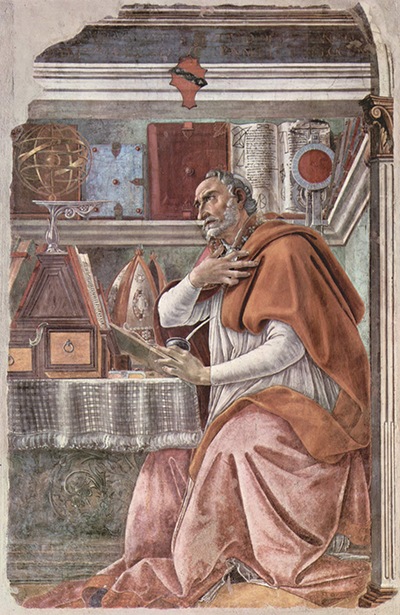St Augustine was depicted on multiple occasions by Sandro Botticelli, with this painting produced in 1480
The artist included this saint within so many paintings that art historians have chosen to rename some of these related artworks in order to differentiate them more clearly. For example, this work is often referred to as Saint Augustine in his Study, though there is another with this name at the Uffizi Gallery.
Much of the beauty and interest to be found here is in the background where Botticelli displays his great skill in depicting different textures and materials such as leather, paper and metal. The drapery on material is also seen in much of his career, either as background curtains or clothing.
Saint Augustine appears again in St Augustine in his Cell and Transfiguration St Jerome St Augustine whilst other famous artists to have used him in their work include Raphael and Michelangelo. Other key portraits of him were also produced by Peter Paul Rubens, Vittore Carpaccio, Antonio Rodríguez, Jaume Huguet, Niccolò di Pietro and Fra Angelico.
St Augustine refers specfically to Augustine of Hippo who was a Christian theologian and philosopher from what is now known as Algeria. The earliest known depiction of him was around the 7th century, many centuries before the Early Renaissance took hold across the Italian Papal States.
The original painting is now on display at the church of Ognissanti in Florence, just a few metres from where the artist once lived. He also was to be buried there, making this artwork particularly significant.
Augustine of Hippo appears to be meditating and some of the background items serve a more important purpose than you might initially realise. It is believed the scene captures him famously writing a letter to Jerome in 420. The hour of Compline is represented by the clock which holds great significance in the story behind this saint. There is also a coat of arms which represents the Vespucci family.




